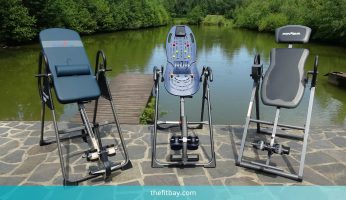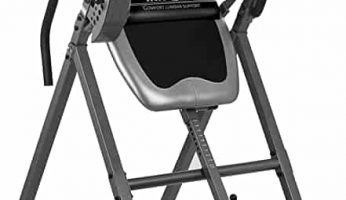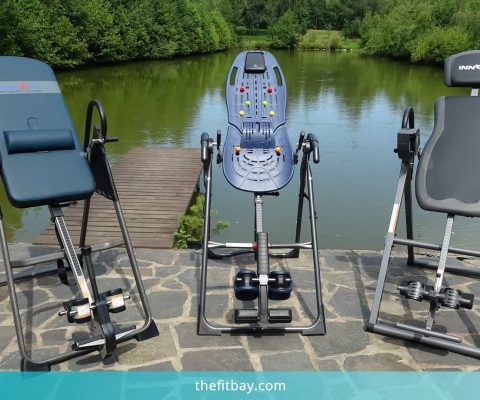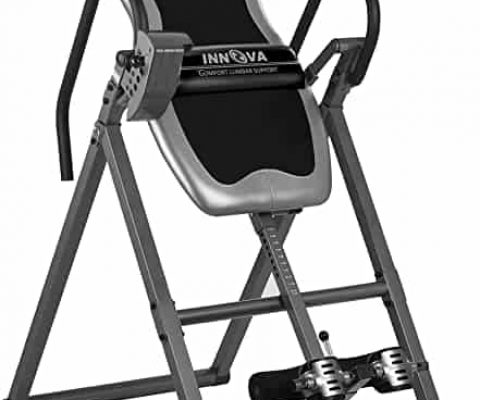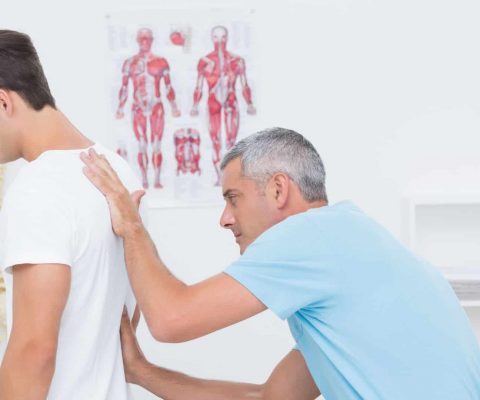Does Inversion Therapy Work? Benefits, Risks, & How-to Guide
Disclosure: We use affiliate links and may receive a small commission on purchases.
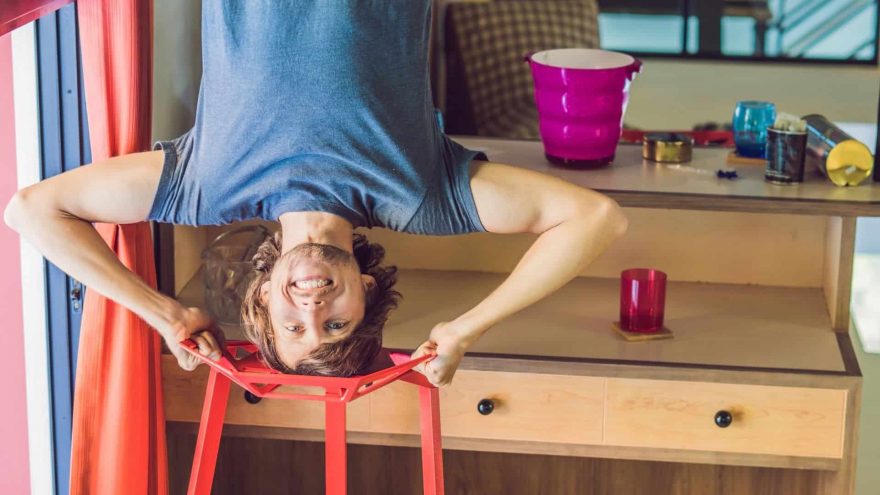 Does Inversion Therapy Work? Benefits, Risks, & How-to Guide
thefitbay.com
Does Inversion Therapy Work? Benefits, Risks, & How-to Guide
thefitbay.com
The question on the mind of prospective inversion therapy recipients is, “Does it actually work?” The answer is, “Yes, it does!”
Inversion therapy is a safe and effective way to bring you back pain relief, improve body posture, and increase blood circulation. Thanks to the practice of inversion therapy for example with using inversion tables, you can also achieve stress relief, inner organ improvement, and other benefits. On the other hand, it is important to understand that inversion therapy is not a “one-minute quick-fix” solution.
We will go into more detail on this, but first, let us briefly introduce inversion therapy and its history to you.
What Is Inversion Therapy?
Inversion therapy can be defined as a therapy method based on the use of gravity. When inverting, one gets into a vertical, head-down position, or they hang upside-down at a specific angle.
It is a very simple, non-invasive, drug-free, safe, and effective method for back pain relief. In fact, the medical community is focused on inversion therapy only in connection with its purported effects on back pain. Most studies and information that can be found are strictly focused on inversion theraphy’s effect on problems with back pain, with its other benefits only at the edges of interest for scientists. However, inversion therapy can offer much more than back pain relief; more info on this to follow.
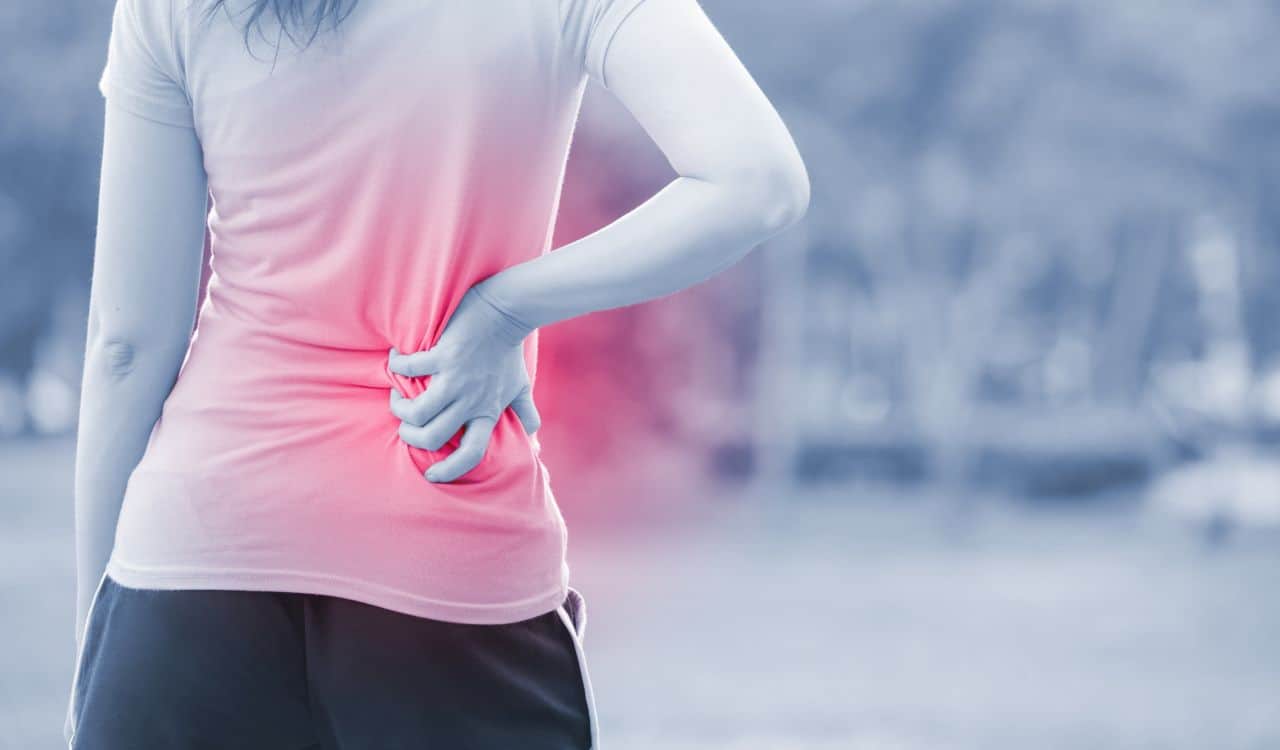
Despite its many positives, one must be aware that inversion therapy cannot solve all issues in the first 5 minutes you try it. The key to achievement of the desired outcome – of permanent back pain relief or anything else – is correct and sustained application.
History of Inversion Therapy
The first known mention of inversion therapy comes from a period around 400 B.C. Back then, Hippocrates, known today as the Father of Medicine, would lift his patients upside-down with a ladder and set of ropes. He used gravity for stretching, pain relief, and to unwind tension. (1)
Rediscovery happened in the 1960s, when Dr. Robert Martin (a California osteopath, chiropractor, and medical doctor) presented his revolutionary Gravity Guidance System. With it, he introduced the effects of gravity on the human body and explained the simplicity of inversion therapy, including its advantages. Thanks to this, many scientific studies were carried out to examine its effects.
The 1980s marked a boom in inversion therapy. The famous movie American Gigolo, starring Richard Gere, showed the use of Gravity Boots. In one of the scenes, Gere was suspended upside-down, doing exercises.
The golden era didn’t last long. In 1983, two doctors, Goldman and Klatz, introduced a study in which they claimed this therapy raised blood pressure and internal eye pressure. They also expressed their concerns about connections with stroke, high blood pressure, and usage of static inversion in people with cardiovascular anamnesis. These conclusions, presented in the media, were misleading, and people were told that inversion could lead to a stroke. (2)
Due to this misinformation, the popularity of inversion therapy quickly dropped off. Neither did the next study from Dr. Goldman in 1985 change the situation. It brought to light some of Goldman’s assumptions. This second study found that there are mechanisms in the human body which serve to prevent damage in an inverted position. Also, he mentioned that it would be extreme to say that this therapy causes stroke. He concludes that not a single case of serious injury, stroke, or cardiovascular accident caused by inversion therapy had been recorded.
In spite of these facts, inversion therapy remains at the fringe of people’s interest. For many years, only certain chiropractors, coaches, and professional athletes used it.
Nowadays, the popularity of the inversion therapy is once again growing quickly. As the modern lifestyle brings back pain to more and more people, it is the back pain relief offered by inversion therapy that is one of its main assets. The rising interest is driven by research and equipment development in this area. There is better equipment available, such as inversion tables, chairs, and gravity boots.
The Principle of Inversion Therapy
The principle of this therapy is based on gravity power. No matter what position your body is in – whether standing or sitting – gravity acts on your body to pull you down.
Basically, this creates constant pressure on your muscles, joints, bones, ligaments, and the spine (vertebrae, discs) etc. This constant pressure is one of the major factors in spinal problems or back pain.
Inversion therapy uses the same gravity power, but in the other way. If you are hanging upside down, or if you are in inverted position at a specific angle, gravity still affects you. But this time, spinal decompression occurs – a reduction of pressure inside the discs.
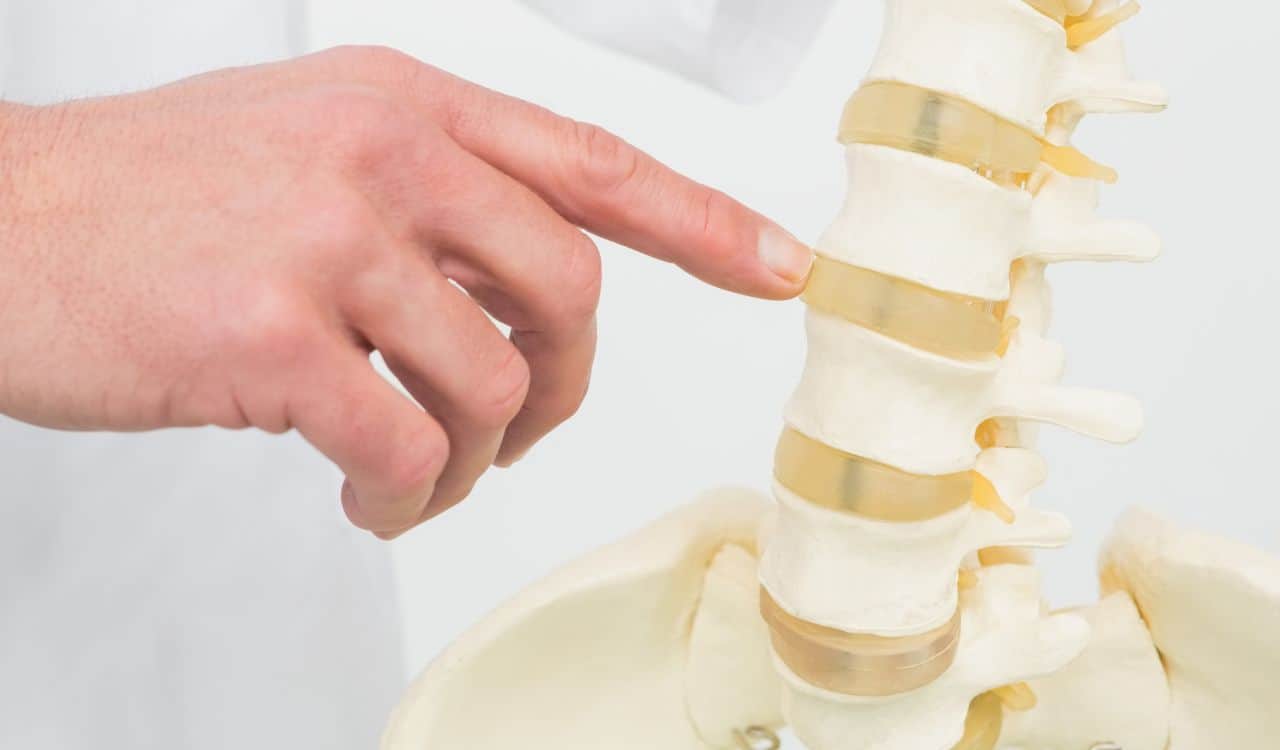
In the case of spinal decompression, discs are not shrunk but widened, and this leads to an easing of nerve pressure, back pain relief, and the spine can even re-align a bit. (3)
It is not only back pain relief and spinal alignment that you get when using this inverted gravity principle. Inversion also affects the nervous, endocrine, lymphatic, and cardiovascular systems of the body. It supports venous return as well. If you are positioned upside-down with both your arms and legs higher than your head, it provides better blood circulation to your heart. Thus, it lowers the venal pressure, and that leads to a total marginal vein resistance decrease. (4)
You may ask yourself whether this method, based on the inverted position of a person against gravity, really works. Just keep reading and you will understand.
Does Inversion Therapy Work?
The answer is yes, it does work!
With growing public interest in inversion therapy from the 1960s on, there has been an equal interest by research workers in studying and proving or disproving effects of this therapy. There are many studies proving the positive effects. These studies will be presented below, as well as their conclusions.
A study in 1964 involving 175 patients who had resigned from their workplaces due to chronic lower back pain showed positive effectiveness of inversion therapy. Apart from chronic back pain, some of them suffered from sciatica, herniated and bulging discs, or spondylolisthesis. The trial subjects were given 8 sessions of inversion therapy, and 155 of them managed to return to full-time work, as they experienced zero to insignificant back pain after the treatments.

The 1964 study emphasizes the effect of stretching the ligaments and possibly allowing the intervertebral discs to decompress. Decompressing the tensed discs helped in returning them to their original position. (5)
You may be interested in the conclusions of the Volvo Aero Corporation Study done by Dr. Dimberg. It examined the effects of inversion therapy on the chronic lower back pain of company workers. The study took twelve months and included 116 people from 3 groups. Scientists showed a decrease in the number of sick days concerning back pain by 33% and also a decrease in overall sick days by 7.9 % per person. In conclusion, inversion therapy is a cost-effective and simple way to improve workers’ health and thus lower employers’ expenses due to workers suffering from chronic lower back pain. (6)
A study was also done focusing on internal disc pressure in the third lumbar space – the Nachemson study. The measurement was done in various conditions – when lying, sitting, standing, and bending, along with supine and vertical traction. While testing, it was revealed that the pressure inside the disk of a lying body is equal to 25% of the pressure when standing. It also proved that a 25% decrease of inner disc pressure will be reached when the body is exposed to a traction equivalent to 60% body weight. This traction can happen in an inverted position when lying at a 60° angle or higher. Quite simply, this proves the efficacy of lower back pain relief in inverted positions. (7)
In 1978, scientists began researching the effect of spinal traction (which is similar to how inversion therapy works) and found that pressure on the discs and muscle tension decreases by 35% after 10 seconds on the equipment. They also concluded that between chairs and tables for inversion therapy, the latter seemed to be more effective.
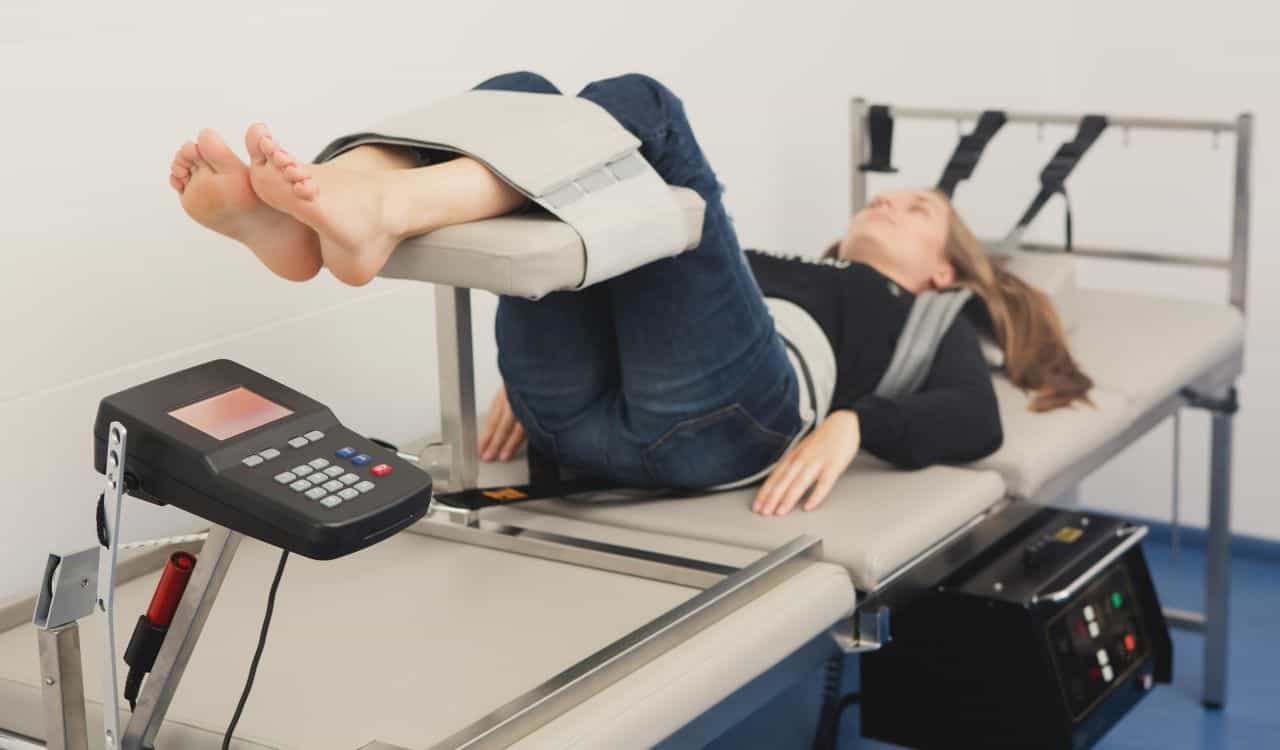
Now, to the ultimate question, “Were the inversion therapy effects permanent?” The statistical results have shown that EMG activity (which indicates pressured intervertebral discs) is lessened upon returning to the original position. As opposed to the opinions of many experts who claim that inversion table results are temporary, no matter how you look at it, this is a permanent result, albeit small. (8)
Another study proving the effects of inversion therapy for back pain relief is the Kane study from 1985. Scientists came to the conclusion that using traction equipment that causes intervertebral separation in the lumbar spine based on gravity effectively provides back pain relief. (9)
One of the latest studies is from England, published in 2012, in which researchers from Newcastle University examined the use of inversion therapy for sciatica treatment and the need for surgery. It was proved that “inversion therapy decreased the need for an operation in sciatica due to single level disc protrusion to 23% as compared to 78% in the non-inversion group.” (10) This conclusion leads to one more finding. The study also points out that a reduction in needed surgery leads to important budget savings for health care. (11)
Now that you know inversion therapy works, let’s see what can be achieved with this therapy and what its advantages are.
Inversion Therapy Benefits
If you know how to do practice inversion correctly and understand your own limits, the benefits certainly outweigh the risks.
Back Pain Relief
The major benefit of inversion therapy is its swiftness in relieving pain in your back. Inverted positions lead to back pain relief as the influence of gravity influence causes spinal decompression and relaxation of tense muscles.
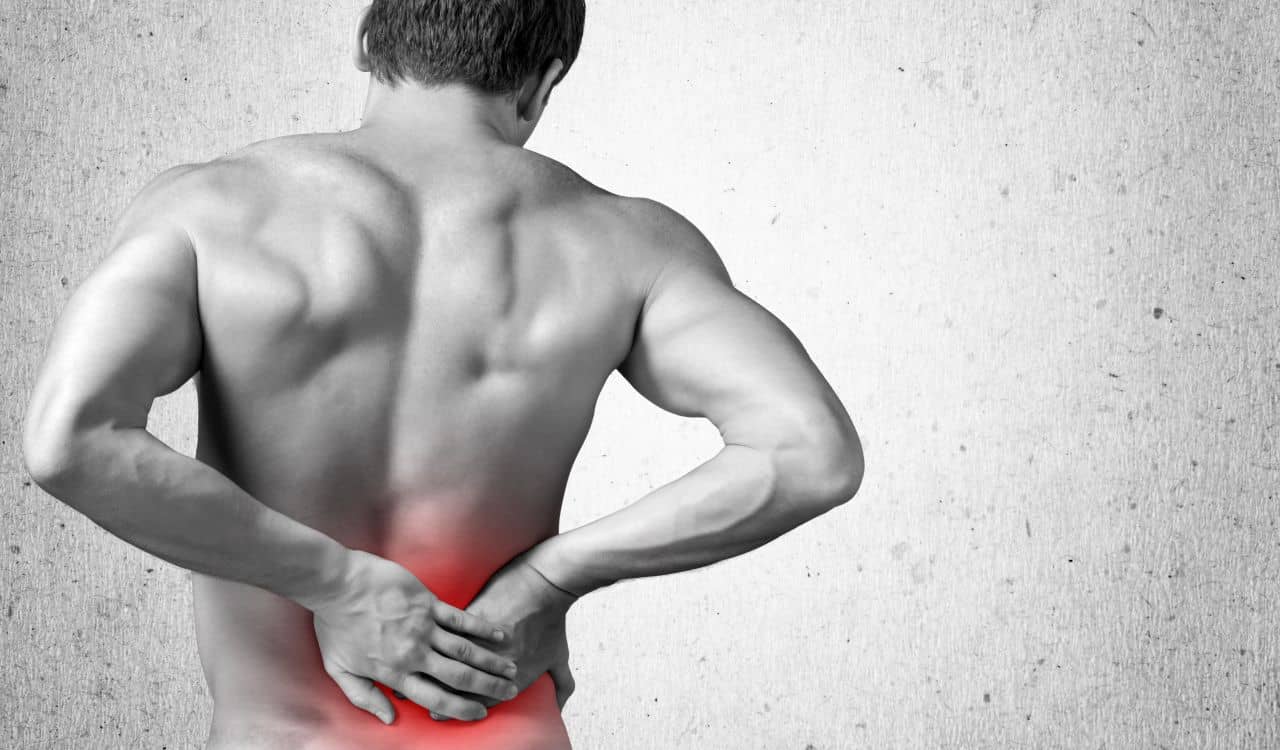
Improves Posture
By practicing, you can improve your body posture. In an inverted position, the spine is decompressed. Inner disc pressure lowers, discs widen, and tense muscles relax. This condition allows a slightly deviated spine to realign if needed. Progressive spine alignment back to the natural position can even lead to scoliosis improvement.
Body posture is dependent on the condition of the back muscles. These muscles are strengthened in inverted positions. Faster results can be achieved by adding exercise during inversion.
Helps with Sciatica
The sciatic nerve is the longest in the body. It innervates most of the lower limbs. It extends from the lower part of the lumbar spine and lower back through the whole lower extremity region. Sciatica problems are presented by strong lower limb pain and lower back pain.
Causes of sciatica differ – herniated or slipped disks, pinched nerves, piriformis syndrome, or narrowing of the spinal canal. Still, the most frequent among these is a herniated or slipped disk. While practicing inversion therapy, spinal decompression comes about so that pressure on discs and the sciatic nerve is lessened and, consequently, one experiences pain relief.
The effects of inversion therapy on sciatica were shown by Newcastle University scientists in a study published in 2012. (12)
Maximizes Growth
The body is slightly longer in inverted positions. Gravity creates more space between vertebrae, discs widen, and the spine is slightly realigned to a more natural position.
It’s easy to forget that even when not inverted, gravity still affects us and creates opposite pressure in our body. This is why discs are shortened and our height lessens. In order to reach and sustain the maximal possible height of your body, you have to practice inversion therapy regularly and on a long-term basis.
There is no definite amount by which your height will increase. The growth is very dependent on the person, and it also depends on your body and your spine condition. In most cases, growth is between 0.3 and 1.0 inches.
Helps with Blood Circulation of Some Body Parts
When you are in inverted position, some body parts are better supplied with blood, especially the brain.
Reducing Muscle and Joint Pain
In an inverted position, gravity affects your muscles and joints as well. Specific muscles are relaxed and better stretched. Body tension eases, as certain body parts are better supplied with blood. These muscles and joints are relaxed, and you will feel that muscle and joint pain is lessened.
Other Benefits
There are other advantages to inversion therapy, including stress relief, functional improvement of inner organs, and release of trapped gases in the body. Inversion therapy also positively affects the lymphatic, endocrine, and whole nervous systems.
Inversion Therapy Risks
We have already discussed the benefits of inversion therapy. Now, let’s have a look at some of the risks and limitations associated with it.
If you already suffer from high blood pressure, you must be extremely cautious. Inversion therapy can cause short-term blood pressure increases. For persons with increased blood pressure, sessions of inversion should only be at shallower angles and for shorter times.
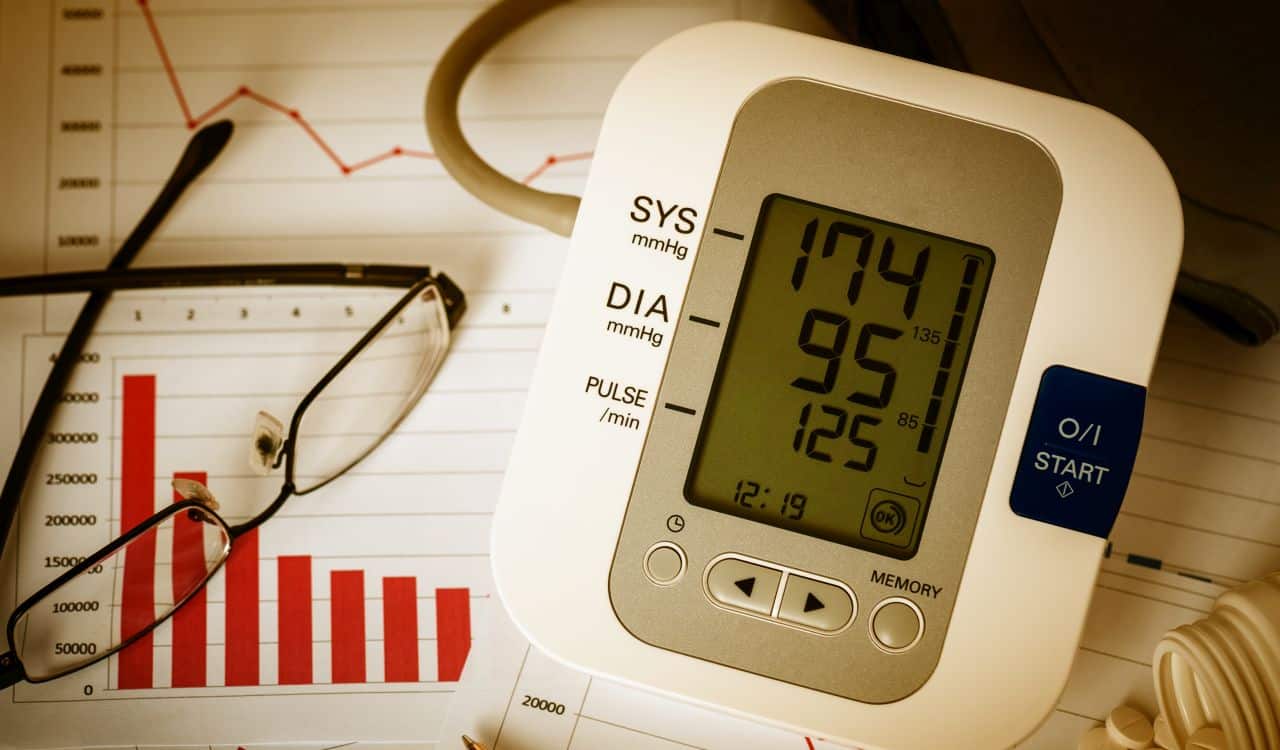
You must be careful if you suffer from a high latent internal eye pressure. During inversion, this pressure can increase, and excessive pressure would have a negative effect on the nerves in the eye.
Inversion therapy is not recommended to people with severe cardiovascular illnesses, as it could lead to a deterioration in your condition. Therapy is also not recommended to people who have previously experienced heart attack or stroke.
Therapy is not advisable for pregnant women. Pregnancy is enough load on its own for the body, and inversion could have negative consequences for mother or fetus.
If you have previously experienced spinal injury or surgery, your suitability for inversion therapy cannot be guaranteed. It always depends on the extent and gravity of your injury and your current condition.
As you know, inversion therapy offers many advantages but also has its limits. When employing it, you should progress slowly. Beginners should start with 5-minute sessions with only mild angles of inclination. When advancing and becoming more experienced, make the angle larger and optionally prolong the time of inversion. Focus on your body and heed your feelings – always feel comfortable.
How to Practice Inversion Therapy
To go ahead and start practicing inversion therapy, or rather to readily achieve an inverted position, you can choose from many options.
You can perform a handstand with the use of headstand bench or through yoga positions. In these cases, you will reach an inverted position, but your body is not hanging, so you will not fully appreciate the potential of inversion therapy and its benefits, which stem from the traction power of gravity. It is advisable that you instead reach an inverted position through hanging.
Inverted positions are reached with the aid of specific equipment constructed to be simple and safe for use. On the market there are various products available – inversion tables, chairs, gravity boots, or inversion swings.
Let’s have a look at certain products in more detail.
Inversion Table
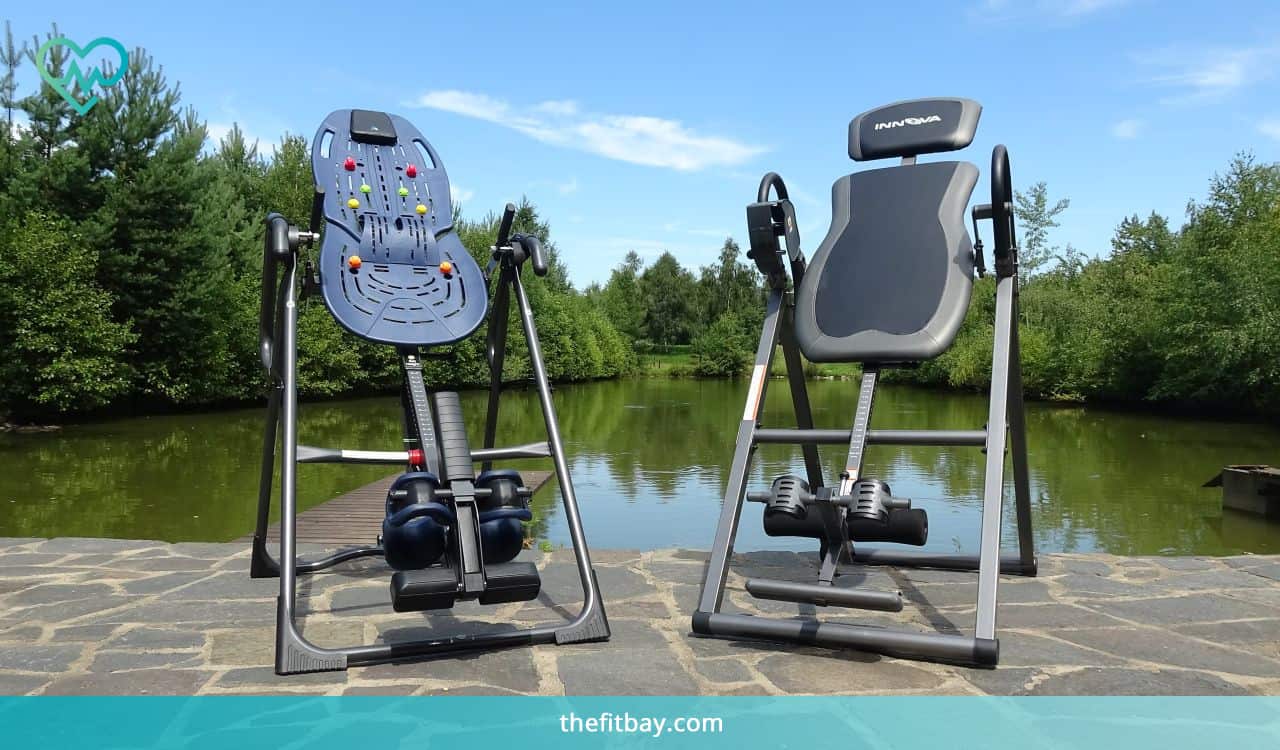
Inversion tables are today the most well-known and widespread product in the field of inversion therapy. They have gained their popularity thanks to their effectiveness in providing back pain relief.
Inversion tables are a table that you lie down on. Using an ankle-locking system, you then turn yourself into an inverted position at your discretion.
Using an inversion table is safe and comfortable for users of all ages. Another advantage of this equipment is that reaching different degrees of inversion is easy, and the user is always in control of the situation when they are inverted.
Related Reading: Do Inversion Tables Help Sciatica?
Each table differs with respect to the quality of used material, the processing quality, maximum loading weight, and maximum user height. You can find some differences, too, in the systems that hold your ankles, the sizes and types of backrest, the length and shape of handles, and the safety mechanisms for maximum angle of inversion. Producers of some types of inversion tables offer premium elements such as lower back support, massage functions, heating, etc.
On the market today, there are many types of inversion tables and additional products made by different manufacturers. One can choose the optimal model of inversion table for meeting one’s own requirements and budget.
Inversion Chair

Another piece of equipment designed for practicing inversion therapy is the inversion chair. This equipment is far from being as well-known and widespread as the inversion table. This is due to there being a relatively low supply of inversion chairs on the market, as compared to inversion tables.
Inversion chairs are constructed such that you reach an inverted position while sitting. People with weak or sore ankles or knees will appreciate this. In the seated position, there is less pressure and weight on ankles and knees. Another advantage of the inversion chair is the ease of getting on and off, which is ideal for older people or those with limited mobility.
What is interesting among product portfolio of inversion chairs is the product which combines an inversion chair and table. This product looks like an inversion chair and allows users to easily get on and off. Once you start with inversion, however, the backrest tilts to the same position as the seat. This product is ideal for people with limited mobility who want to do inversion therapy in a normal position while lying down with legs outstretched.
Gravity Boots

Gravity boots, also known as inversion boots, are fitness gadgets that are worn around the ankles. These boots are provided with special hooks that can be attached to a horizontal bar and that allows you to hang completely upside-down.
This is more physically demanding – when you hold the horizontal bar, you have to be able to pull up your legs, hook the gravity boots on, and then slowly lower yourself into full inverted position. You also have to be able, after exercise, to pull yourself back up towards the horizontal bar and unhook the boots. This is why they are advisable only for physically strong persons who use them for muscle strengthening.
This is a unique tool that provides many of the advantages of inversion therapy but also allows you to do effectively muscle stretching or strengthening.
This method is not suitable for people who are just starting with inversion therapy. Your body is, from the very beginning, in a fully inverted position, which can lead to a headache and back pain in users not accustomed to hanging upside-down like this.
Headstand Bench

Headstand benches are usually made from a reinforced steel frame and a seat with at least 2 inches of padding. The reinforced steel frames are shaped like hand stands, and the seat has a reasonable curve to allow the shoulders to be well-balanced.
As such, these benches are mostly used for yoga practice, and they allow for many special yoga poses for which you first must be head-down, as in a headstand. These yoga poses provide another option for reaching inverted positions and profiting from some of the resultant benefits. Thanks exercises that include a headstand bench, you will attain better blood supply to your brain. You will also stretch muscles, strengthen muscles attached to the spine, and improve your deep stabilization system.
Nevertheless, you should be aware that when doing exercises with a headstand bench, your body is not hanging, so you do not achieve spinal decompression as you would with an inversion table/chair or gravity boots. If you primarily need inversion for back pain relief, consider inversion tables or inversion chairs.
Inversion Swing
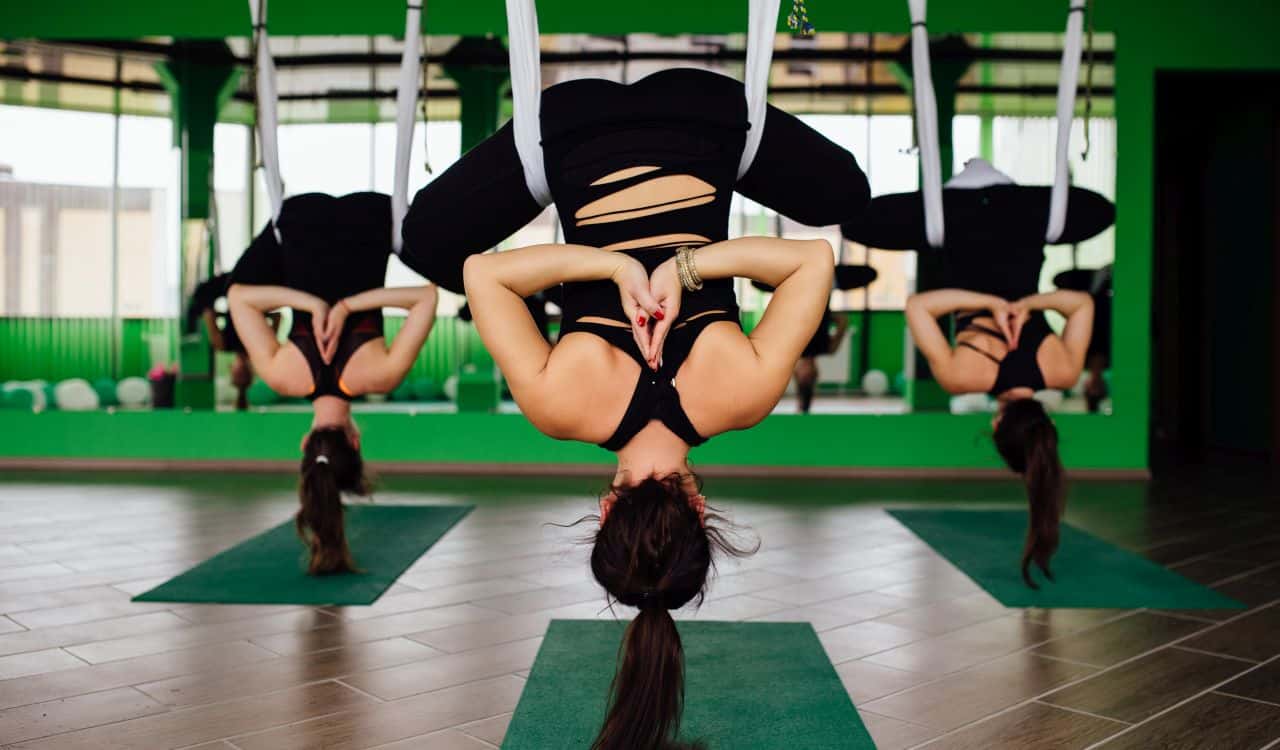
Last but not least, more equipment for inversion therapy presented can be found with the inversion swing, also called an inversion sling, yoga swing, or antigravity yoga tool.
Like the headstand bench, the inversion swing is mainly regarded as a yoga prop. Notwithstanding, the inversion swing can be used to perform inversion therapy, since antigravity yoga consists of many poses while in an inverted position. Compared to headstand benches, inversion swings allow you to hang your body, so they are a suitable tool for back pain relief.
The inversion swing is made from materials used to make parachutes. This makes it safe for the swing to hold hundreds of pounds of weight. The swing has several grips and handles on it, making it easy for the user to hold the arms of the swing and perform inversion therapy with no fear.
We have presented many options and equipment for practicing inversion therapy and reaching your desired outcome. Choose a product that best matches your specific needs. Enjoy your inversion therapy, and don’t forget to help us by sharing this article. Thank you!
Sources
- ,
- ,
- ,
- ,
- ,
- ,
- ,


